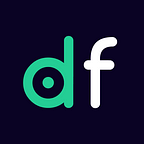The time’s come to tell you more about the upcoming financial products — Collateral Debt position, or CDP, and Debt Risk Option, DRO.
This article is dedicated to CDP. You will learn what CDP is, what the use of this financial instrument is, and what to do with the money you get.
What is CDP?
CDP stands for Collateralized Debt Position. Basically, it’s a smart contract that allows the taking of a loan in cryptocurrency against another cryptocurrency.
But let’s make it simple. Today we will look at everything through examples.
Suppose we have one user, let’s call him Bob.
Suppose Bob decides to contact a centralized bank.
When Bob goes to a bank asking for a loan as a borrower, the bank, as a lender, considers his profile and credit reputation to decide if it’s going to give Bob that money.
In a decentralized crypto world, there’s no central body, which is a point of failure and risk. If Bob decides to take a loan in cryptocurrency, to make sure Bob pays the loan, he needs to provide collateral cryptocurrency, an asset that secures a loan, as a guarantee of repayment. If Bob fails to repay the loan, the CDP will be liquidated.
In that case, it means that the collateral cryptocurrency will be sold on a DEX or other steps to protect the lender can be taken.
How will CDP be implemented in Dfinance?
The Dfinance team is creating its own CDP, which will allow Bob to use ETH as collateral and in return receive XFI, the native cryptocurrency of Dfinance.
How many ETH does Bob need to deposit as collateral to receive x XFI?
The formula is quite simple: (xETH * $Сurrent market price)*50% = maximum amount of XFI a borrower can get.
In this formula, 50% is the risk the borrower takes against his collateral. This figure can be changed. We call this figure LTV or loan-to-value ratio, and the logic here is simple: the lower LTV — the lower the risk of default.
Example:
Let’s take a look at the following example. Imagine 1 ETH was worth $100. Bob wanted to deposit 5 ETH. In that case the maximum amount of XFI that Bob could get would be 250. But to take 250 XFI is less risky in terms of loan payback. Just because the liquidation can occur at a lower exchange rate. It means that your collateral is safer at the moment.
Why Use CDP?
Why can’t Bob just buy XFIs on Uniswap?
Of course, he may buy some XFI easily straight from Uniswap, but in this case, Bob has to pay for it and sell ETH to obtain XFI. But what if Bob does not want to sell his ETH, but wants to participate in the Dfinance ecosystem and get some XFI?
When it comes to CDP, Bob’s 5 ethers are not spent, they are secured in a smart contract until he pays back the amount he borrowed.
Ok, he gets XFI. What can Bob do with them?
With the XFI received, Bob may participate in the Dfinance network in many ways with the goal to get rewards in XFI and keep his ETH intact. Here are a few examples of what he might do:
- Provide liquidity
Provide liquidity to Unswap to get a fee from any trades within the ETH/XFI pool as well as acquire the pool’s liquidity tokens (LPs) to use within the Dfinance system, and earn inflation rewards in XFI. Currently, the network allocates 48.25% of its inflation rate to LP stakers.
- Stake XFI and become a validator.
A validator is a person who has set up a full node, a powerful computer which generates and signs new blocks. To become a validator, Bob is not only required to have sufficient equipment, but to also stake some XFI. For this work, validators get commissions in XFI.
- Delegate
If Bob’s computer doesn’t meet technical requirements, he may delegate his XFI or LPT to a trusted validator. This means that these tokens are locked and can’t be used anymore. In return for that, delegators get fees from validators.
In the next article, we will take a closer look at DRO — Derivative instrument for CDP, where credit risk is transferred from one party (Risk Seller) to another (Risk Buyer) without transferring the underlying assets. We will break down this financial instrument, so stay tuned!
Website | Twitter | Telegram | GitHub | Blog | Discord | Documentation
